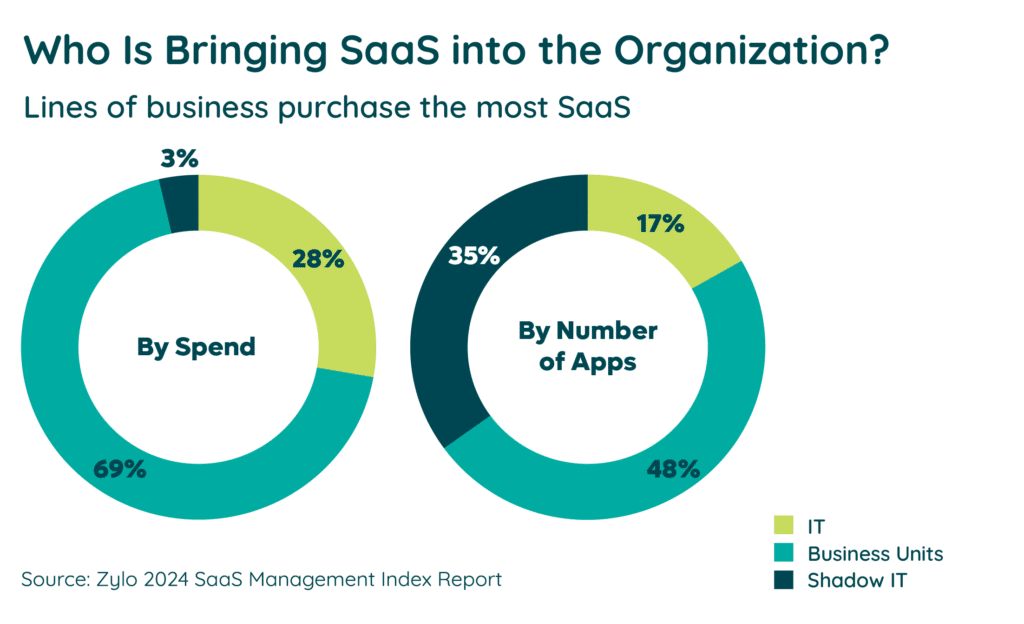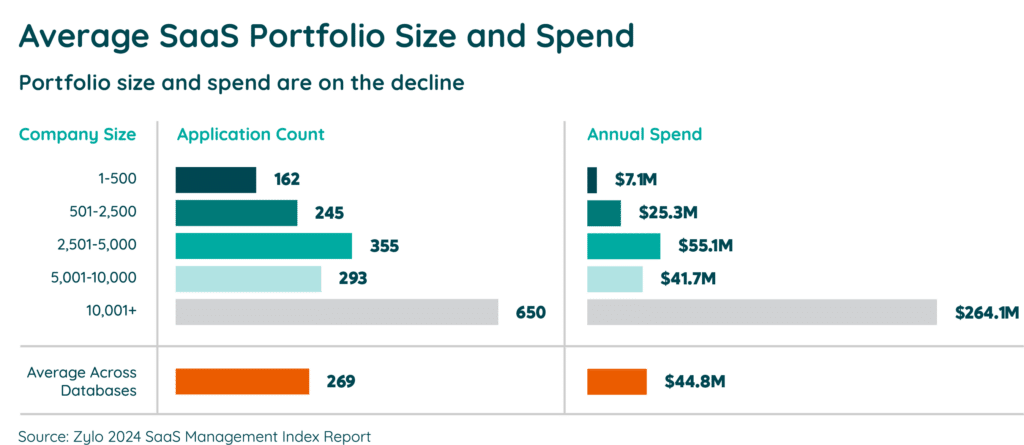Table of Contents
Cloud growth has created a seismic shift in the way IT Asset Managers (ITAM) need to think about managing software, especially SaaS. Traditionally, ITAM teams served as the primary gatekeepers of all software entering the organization. SaaS changes the game, however, shifting purchasing from IT to lines of business and individual employees.
Slack. Asana. Calendly. Creative Cloud. Dropbox. Zoom. These widely popular SaaS tools — among hundreds if not thousands more — play an integral role in helping employees flourish in their roles. They’re now very common in the workplace and quickly overtaking on-premise software. Case in point: Bessemer Venture Partners predicts cloud software will become the dominant model for all software in the next three years.

As a result, hundreds of SaaS applications fly under the radar of ITAM or Software Asset Managers (SAM), and enter the organization as shadow IT, increasing costs and risk. In fact, more than 70% of all IT software purchases now occur outside of the IT team’s purview, while roughly one in ten (7%) employees expense software.
With SaaS here to stay, many in the IT Asset Managers field now understand the unique challenges that come with managing cloud-based software and realize the need for a dedicated SaaS Manager.
Why Do You Need a SaaS Manager?
Enterprise organizations today average 650 apps, and spend more than $264 million per year, according to Zylo’s SaaS Management Index. Due to shadow IT, organizations typically underestimate their SaaS portfolios by two to three times.
Because SaaS appears in multiple and often redundant instances across an organization — not under a centrally managed system — you need a dedicated team or point person to actively monitor all cloud-based applications, and own the organizational SaaS Management strategy.

The SaaS Manager role varies by organization, but the ultimate goal involves deriving the most value from each tool.
“SaaS Management for us, from a procurement perspective, is determining if something is physical software on a device or if it’s going to the cloud that’s based on a subscription,” said Renee Turco, Technology Asset Manager at AbbVie at SaaSMe. “We absolutely recognize it has to be managed. We’re spending money on it, so we need to understand the consumption.”
Pivoting from IT Asset Manager to SaaS Manager
Being a relatively new role in software management, you may not find an abundance of specific job posts for the title of “SaaS Manager” or “SaaS Application Manager.” At Zylo we fully expect to see the SaaS Manager become one of the most important roles in IT over the next few years.
Both IT Asset Managers and SAM professionals possess the experience and skill-set to seamlessly add SaaS to their software management portfolio. And while the roles of IT Asset Manager and SaaS Manager are not mutually exclusive, the shift is about merging traditional, on-premise software with cloud and SaaS Management.
Data Drives Executive Buy-In
With any new role, you may wonder about obtaining executive buy-in. Fortunately, it’s typically an easy sell, because SaaS usage data speaks for itself. You may even receive accolades for bringing a forward-thinking, cost-saving solution to the organization.
Paired with a SaaS Management platform, a SaaS Manager can quickly discover real-time metrics on license usage to identify rightsizing opportunities, eliminate redundant applications, better manage contracts to avoid auto-renewals, and most importantly — drive significant savings for the organization.
Some SaaS Manager Roles and Responsibilities Include:
- Work in tandem with IT and key business stakeholders to identify and catalog all SaaS subscriptions and applications.
- Establish a company-wide, transparent system of record to document all SaaS.
- Set SaaS governance guidelines for application adoption, license provisioning, security, privacy, and user on- and off-boarding.
- Monitor SaaS inventory to identify redundant applications and highlight cost savings.
- Manage application lifecycle and establish a centralized renewal calendar.
- Help employees navigate existing SaaS applications, and source new applications to best serve the organizations.
You Can’t Manage What You Can’t See
There’s zero doubt SaaS will continue to grow over the next few years, and now’s the time for enterprise technology leaders to rise to the occasion and not only establish SaaS Management protocols, but begin developing the SaaS Manager role.
Because, at the end of the day, you can’t manage what you can’t see.
Learn what it takes to forge your career in SaaS Management by watching SaaSMe on-demand. You’ll hear from experts who are thriving in the SaaS Manager role, and learn how they made the transition to the hottest career in enterprise tech.
ABOUT THE AUTHOR

Zylo
Zylo is the leading enterprise SaaS management platform that transforms how companies manage and optimize the vast and accelerating number of cloud-based applications organizations rely on today. The platform provides one system of record for all cloud-based software purchased across a company, enabling customers to discover, manage, measure and optimize cloud investments with real-time insights into spend, utilization and feedback data.

